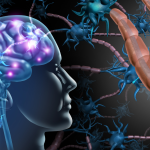Our thoughts control our mood. Our mood controls our actions. Cognition. Emotion. Behaviour. All three are connected, and all three affect our well-being.
Imagine being able to change the way you think, react to stress, and handle negative emotions. That’s the power of Cognitive Behavioral Therapy (CBT).
CBT helps reframe negative thought patterns and has become one of the most trusted therapies for tackling everything from anxiety to depression. Its rising popularity is shaping the way we approach mental health in the long run—offering real, lasting change for those ready to build resilience and lasting emotional well-being.
Theoretical Foundations of CBT
Cognitive Behavioural Therapy is the most widely used and researched form of psychotherapy. The Cleveland Clinic describes CBT as a form of talk therapy that helps manage conditions such as depression, anxiety, grief, stress, insomnia, and chronic pain. Together, the therapist and the patient work on changing patterns of thinking and behaving to help improve the patient’s life. This model, developed by Aaron Beck in the 1960s, explores how thoughts, feelings, and behaviours interact.
This type of therapy focuses on addressing current problems and finding solutions. Unlike analytic psychotherapy, which focuses on the deeper cause of a problem, CBT helps individuals develop healthier, more adaptive thinking and coping strategies to improve emotional well-being. The goal is to identify and restructure harmful thought patterns and behaviours that have negative emotional and mental impacts on our health.
It combines two approaches:
Cognitive Therapy focuses on your own thoughts, attitudes, and expectations. Negative thoughts or misbeliefs can be harmful, and we can often blow them out of proportion. For example, you may receive criticism at work and immediately think you will lose your job. This is known as catastrophizing. The goal is to recognize and change these false beliefs to realistic ones to enable clearer thinking and better control over our actions.
Behaviour Therapy is the idea that human behaviour is learned and can be changed. For example, if someone is depressed, they often withdraw from doing the things they love, leading to further isolation. The goal is to figure out if certain behaviours make life harder or worse. Once we identify the behaviour or recognize the pattern, we can work on changing our behaviour.
Thought Distortions
For people suffering from anxiety, depression, anger, and substance abuse, life can be challenging. Through Cognitive Behavioural Therapy, we understand the connectedness between our thoughts, emotions, and behaviours. When we encounter a situation or event, we experience automatic thoughts. If these thoughts are negative, they are often cognitive distortions influenced by underlying beliefs, which can affect our mood and, in turn, our actions. For example, if your boss asks a colleague and not you to join a special team, you might immediately think, “She thinks I am dumb” or “I’m no good at my job.”
These negative thought patterns can lead to bad moods and unhelpful behaviours, which then reinforce the same negative thoughts, creating a cycle that’s hard to break. Since our thoughts, feelings, and actions are all connected, making a change in one area—whether it’s how we think, feel, or act—can help shift the whole cycle, leading to healthier habits and a more positive mindset.
Irrational ways of thinking can cause emotional distress and unhealthy behaviours. Cognitive Behavioural Therapy teaches you to identify these negative thoughts, question their validity, and replace them with more rational thoughts that will reduce stress and foster healthier behaviour patterns. Changing our thought process takes practice, and these skills can be learned with a trusted therapist.
Some common cognitive distortions include:
- Catastrophizing: always expecting the worst-case scenario or seeing things as far worse than they are.
- All or nothing: thinking in black and white without any grey area
- Overgeneralizing: drawing a broad conclusion from one event.
- Mental Filtering: focusing on the negatives of a situation and ignoring any positives
- Disqualifying the Positive: dismissing or minimizing any achievement
- Jumping to conclusions: making negative assumptions by trying to mind-read or telling the future
- Emotional Reasoning: believing your emotions are an accurate predictor of reality
- Should Statements: placing unrealistic expectations on yourself or others
- Labelling: giving yourself or another a label based on one mistake/behaviour
- Personalization: carrying the responsibility or blaming yourself for things out of your control
Core Beliefs
Our core beliefs shape our automatic thoughts, which drive the way we think and behave. Not all core beliefs are negative, but in CBT, we also look at intermediate core beliefs—the assumptions and rules we create to support our deeper beliefs.
This is why two people can have very different reactions to the same situation. For example, if someone believes “I am inadequate,” an intermediate belief might be, “If I don’t succeed in everything I do, I’ll be rejected.” This thought pattern can lead to feelings of anxiety or failure when things don’t go perfectly. When we start to change those core beliefs, we can shift how we think and act, which in turn can improve how we feel.
Types of Cognitive Behavioural Therapy
CBT has been a springboard for new forms of therapy that build on the original principles and offer a unique approach depending on the issue.
Mindfulness-Based Cognitive Therapy (MBCT) combines meditation with CBT to help manage stress and break patterns of negative thinking. It’s often used for anxiety, depression, and bipolar disorder.
Dialectical Behaviour Therapy (DBT) mixes problem-solving with acceptance, teaching people to find balance in stressful situations and manage intense emotions. It’s effective for conditions like PTSD, ADHD, substance abuse, and borderline personality disorder.
Acceptance and Commitment Therapy (ACT) helps individuals change how they respond to their thoughts, emotions, and physical sensations. By learning to accept these feelings as natural, people can focus on making positive behaviour changes. ACT is useful for depression, social anxiety, chronic pain, OCD, and stress at work or school.
Rational Emotive Behaviour Therapy (REBT) focuses on identifying and challenging irrational beliefs and replacing them with healthier, more productive thoughts. It’s especially helpful for those dealing with guilt, anger, grief, and anxiety.
Techniques Used in Cognitive Behavioural Therapy
There are a number of ways a therapist works with you to change your behaviours. Some of these include:
- Cognitive Restructuring – a therapist helps identify patterns of negative thought processes and teaches you how to restructure these.
- Exposure therapy – exposure to uncomfortable situations to overcome fears and gain control over feelings and behaviours.
- Journaling – writing down your thoughts and feelings helps to understand the connection to your actions, identify negative patterns, and record your progress in CBT.
- Meditation – focus on inner thoughts and feelings to help navigate through negative thinking.
- Problem-Solving and Goal Setting – create meaningful SMART goals (specific, measurable, achievable, realistic, time-limited) to empower change.
Benefits of CBT
CBT is effective in helping individuals manage mental health symptoms. Some of the key benefits include:
- Practical Tools: CBT teaches coping strategies and problem-solving skills that can be used in everyday life.
- Long-Term Results: Since Cognitive Behavioural Therapy focuses on changing underlying thought patterns, many individuals continue to benefit from its lessons long after therapy ends.
- Non-invasive and Structured: CBT doesn’t require medication (although for more severe cases, medication may be added to the treatment plan) and is structured to be goal-oriented, making it a practical option for many people.
How CBT Works for Different Conditions:
- Depression: Distorted thinking contributes to and maintains depressive symptoms. CBT helps to identify and challenge these negative thoughts by developing healthier thought patterns. The therapist may also suggest participation in new activities that help improve mood and establish feelings of accomplishment. These activities could be anything from socializing, exercise, or a hobby. Studies have shown that CBT is an effective treatment for depression and can act as an antidepressant. Note that in more severe cases CBT can be combined with medication.
- Anxiety: Exposure based techniques are used to treat anxiety disorders such as PTSD, OCD, panic disorder, general and social anxiety, and some phobias. Anxiety can stem from distorted fears. This type of behavioural intervention helps people confront their fears and change the way the brain responds.
- Children/Adolescents Studies have shown that CBT significantly reduces anxiety in children and adolescents, with improvements maintained over time. Young people are taught how to identify signs and triggers for anxiety or stress and use techniques such as relaxation or breathing exercises, as well as recognizing negative thought patterns.
- Chronic Pain: Living with a chronic illness or pain can feel overwhelming with no relief in sight. Negative thoughts and behaviours can lead you to do things that can make pain worse such as further immobility and isolation, however CBT helps shift these thoughts and develop better coping strategies.
Finding a CBT Therapist in Canada
Finding a good therapist may take some time. Think of it as finding the perfect pair of shoes, the ones that fit right. Therapy involves vulnerability, trust, and, for a lot of people, a huge step in acknowledging that you need help. If you aren’t comfortable with your therapist, there is nothing wrong with looking for a new one.
Factors you should consider when searching for a therapist are:
- Experience and specialization: Make sure the therapist has experience in the area you require.
- Accessibility: Do you want after-hour appointments? Are you more comfortable with virtual appointments?
- Credentials: Make sure the therapist is licensed and meets all regulations in your province or territory.
In Canada, there are many ways to access CBT, whether through private therapy, public healthcare services, or online platforms.
Private Therapy: Most therapists in Canada offer CBT as part of their private practice. You can find a qualified therapist by visiting the websites of professional organizations like the Canadian Psychological Association (CPA) or Psychology Today. The cost of private therapy can vary depending on the therapist’s experience and location. Typically, the range is between $100 to $250 per session. While many people pay out-of-pocket, private insurance may cover part of the cost.
Public Healthcare: In some provinces, you can access CBT through the public healthcare system. For example, the Ontario Structured Psychotherapy Program offers CBT for individuals with anxiety and depression at no cost. You typically need a referral from your family doctor or a healthcare professional to access therapy through the public system.
Online CBT: If you live in a remote area or prefer online therapy, there are platforms offering CBT, such as MindBeacon and Telus Health CBT. Many of these services offer virtual therapy sessions or self-guided programs. Online platforms are becoming more popular due to their flexibility and accessibility, especially for people in areas with fewer in-person mental health resources. For Canadian youth, Kids Help Phone is an e-mental health service available 24/7 that offers young people resources virtually and in person.
Mental Health Organizations: Connect with mental health organizations like the Canadian Mental Health Association (CMHA) for information on where to start your search for help. CMHA has a free skill-building program called BounceBack to help with mild to moderate depression and anxiety.
CBT remains an important piece in mental health treatment. With advances in technology and personalization, this therapy is proving effective not only for anxiety and depression but casts a wider net to include conditions like PTSD, insomnia, eating disorders, weight loss, and chronic pain.
With new technology, CBT is now more accessible than ever—whether through in-person sessions, online platforms, or even apps. This flexibility makes it easier for you to get the support you need, no matter what you’re dealing with.
By teaching us to identify and challenge negative thoughts, CBT helps develop healthier emotions and more positive behaviours and gives us tools to make lasting, positive changes in our lives. Ultimately, it helps us become better equipped to handle life’s challenges.
Whether you choose private therapy or an online platform, help is within reach.
~Read more from The Health Insider~
- The Student Stress Reset: 7 Quick Fixes Backed by Science & Student InterviewsDon’t let deadlines crush you. Learn 7 low-effort stress resets, including the 2:4 Pursed-Lip Breathing technique, you can do anywhere!
- At-Home Spa Day Essentials: Your Guide to Ultimate Cozy Pampering🎁 The ultimate self-care gift for someone who deserves to unwind and recharge. Skip the pricey spa day, with the right tools and cozy vibes, you can turn your bathroom into a relaxing retreat anytime.
- Why Recovery Beats Constant Grind: The Science of Strategic RestThe always-on culture is backfiring. People everywhere are discovering that quality recovery, not endless hustle, unlocks better focus and energy.
- When ‘What If?’ Won’t Quit: Coping With Health AnxietyFrom freckles to faint aches, health anxiety can turn normal body changes into sleepless nights—especially in Canada’s strained system.
- The Return of The Age of Anxiety: A Time to Thrive, Not Just SurviveWe’re living through the second Age of Anxiety and it can feel overwhelming—but it can also be a signal for change. Learn how it can guide growth, healing, and deeper self-awareness.
- Vagus Nerve Stimulation – a Rising Star in Mental Health TreatmentFrom depression to PTSD, vagus nerve stimulation offers hope where meds fall short.
The information provided on TheHealthInsider.ca is for educational purposes only and does not substitute for professional medical advice. TheHealthInsider.ca advises consulting a medical professional or healthcare provider when seeking medical advice, diagnoses, or treatment. To read about our editorial review process click here.






